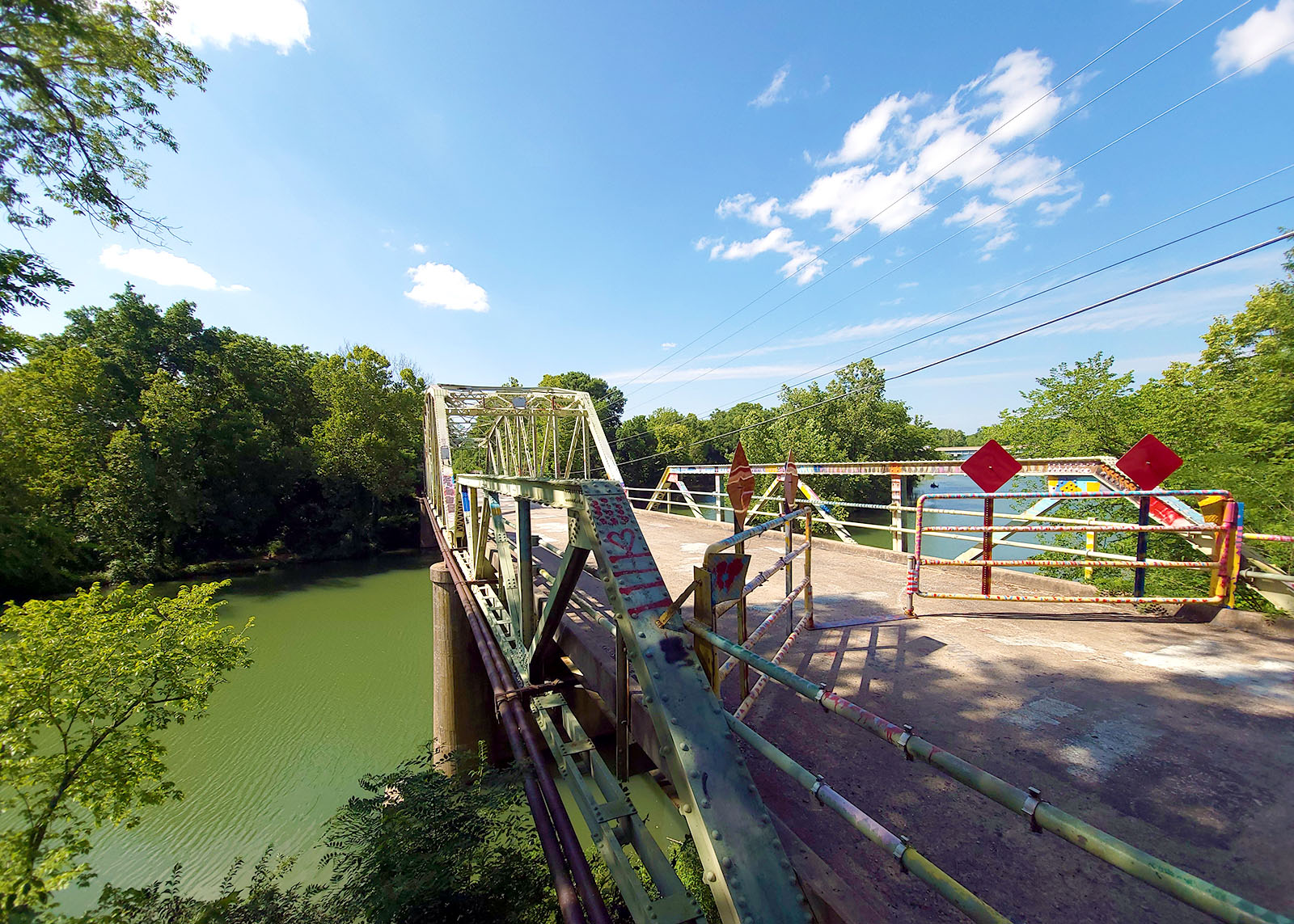About two years ago, the Missouri Department of Transportation was looking to retire the iconic Lake Springfield Steel Bridge at the southern end of the Galloway Creek and James River Greenway trails.
After months of contract negotiations, the Springfield-Greene County Park Board is slated to assume ownership of the bridge, plus the $100,000 MoDOT had earmarked for its demolition.
While it was formerly a part of U.S. Highway 65, the bridge, which was built in 1936, hasn’t supported vehicular traffic in decades. The bridge is an unofficial trailhead that sits above the James River just northeast of Lake Springfield and just southeast of the James River Freeway and Highway 65 interchange.
Details of the exchange
Upon determining that they no longer needed or wanted the aging bridge, the Missouri Highways and Transportation Commission, the six-member governor-appointed board that oversees MoDOT, reached out to Springfield’s Public Works Department to see if it would be interested in owning the structure.
If MoDOT couldn’t find a taker, it intended to demolish the bridge.
Like MoDOT, Springfield Public Works had no use for the bridge, but knew of another city government group that did. In July of last year, the Park Board Properties Committee began having conversations about what ownership would look like, due to the complexities of maintaining the nearly 100-year old bridge.
Springfield Environmental Services maintains a sewer line and AT&T has conduit for fiber lines along the bridge. In addition to the cost of maintenance, the Park Board had to complete an environmental study and an asbestos inspection.

Despite the bridge’s age, there are no known defects or items in disrepair. However, the bridge has not been inspected for hazardous materials, making acceptance of the bridge into the city’s inventory dependent upon the results of the environmental study and asbestos inspection.
The Park Board unanimously approved the acquisition at its June 9 meeting, and the contract is circulating for signatures in Jefferson City.
The Park Board will be responsible for maintenance of the structure, which is approximately $5,000 annually.
Miles Park, the assistant director of operations of the Park Board, estimates the $100,000 could cover maintenance costs for at least 15 years. When the transaction began taking shape last year, MoDOT completed repairs the Park Board hopes can extend the safe and useful life of the bridge for another couple of decades.
The city seeks liability insurance on the bridge in the amount of $1 million, and would elect to have it demolished and a pedestrian bridge built in its place in the event of detrimental damage or loss.
“It’s a pretty neat opportunity to have that at no cost along with money for maintenance,” said Bob Belote, Springfield’s director of parks and recreation, at the June 9 meeting. “We’re excited about it, but we’re even more excited about what it means ongoing for the trail community here — a pretty big deal.”

Bridge to play increasingly significant role in future of trail system
While the bridge already serves as an important connector for the James River and Galloway Creek Greenways, as well as the Trail of Honor Section and the James River Water Trail, its position will play an increasingly significant role in the trail system going forward.
“We think it's even going to play an even more significant role,” Park said. “It would be hard to overstate the importance of having that trailhead at that location.”
With its proximity to the Chadwick Flyer Trail and Lake Springfield, the bridge’s role is vital amid the expansion of other amenities in the area. Construction on the Chadwick Flyer trail, which will connect Springfield and Ozark, is set to begin later this month as planning for the future of the Lake Springfield area is underway.
While the south end of the bridge can often be identified by road blockers and a cluster of vehicles haphazardly parked on the side of South River Road, the Park Board intends to eventually construct a more formal trailhead and parking lot.
“That’s a popular place,” Belote said. “People are drawn to that, they like it. It’s where they want to go to kind of hop on the trail. We need to put the trailhead there.”
Belote also described the opportunity to host events on the bridge, in collaboration with Ozark Greenways, as “limitless.”
While MoDOT was simply seeking to remove the bridge from their inventory, they recognized what that bridge meant to Springfield’s trail system.
“There's definitely value in maintaining that aspect, to maintain that portion of the trail and everything else, we definitely see the value there,” said Greg Chapman, an assistant district engineer for MoDOT’s Southwest District. “I think we definitely arrived at a good place with respect to our partnership with Springfield.”


